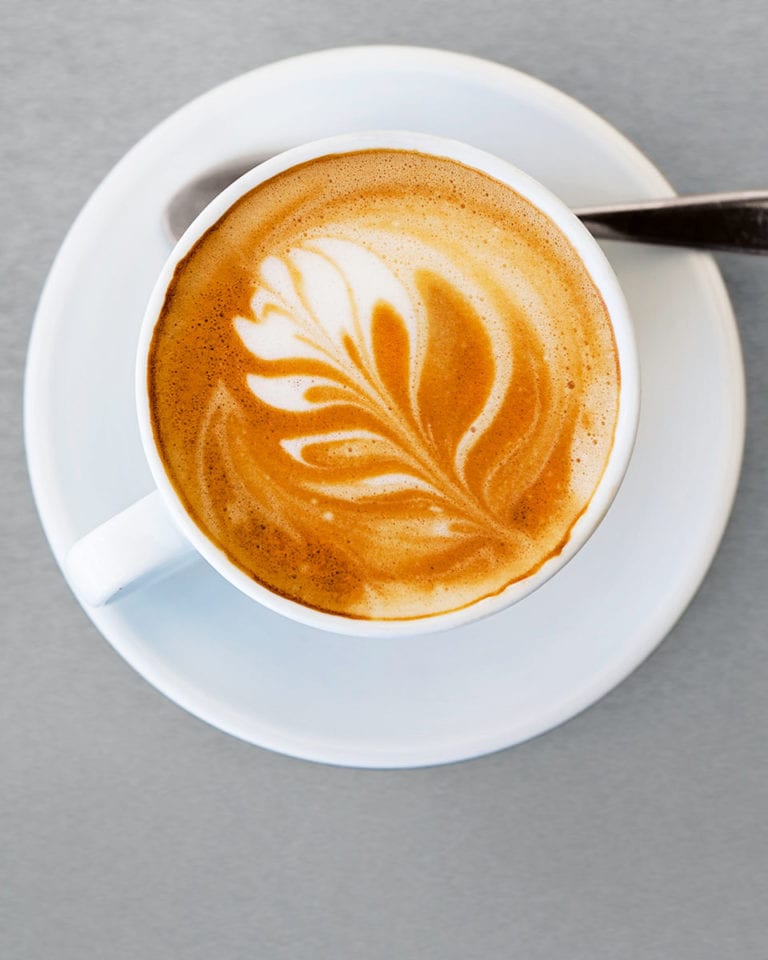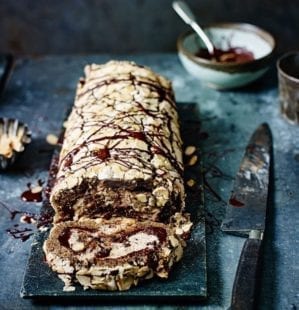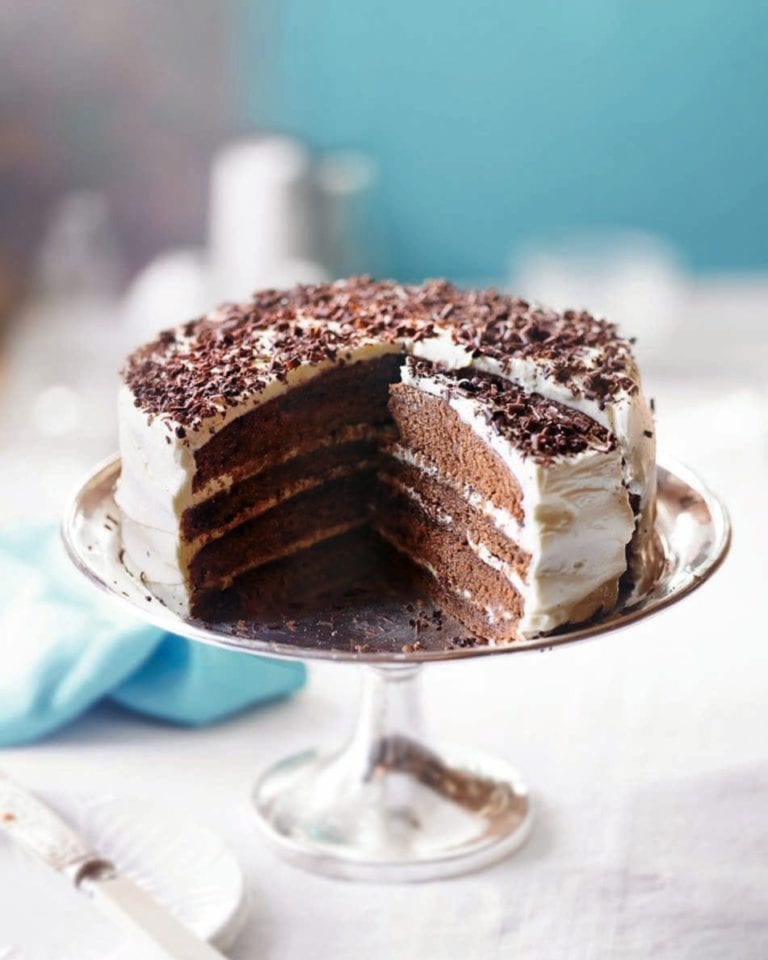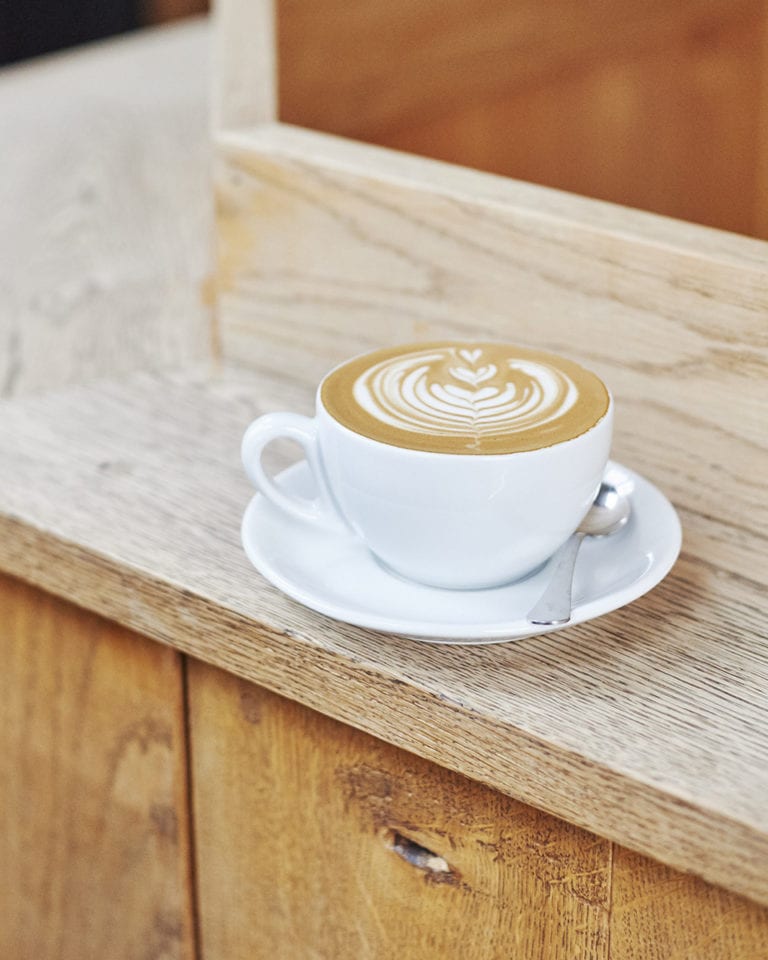How to make coffee shop drinks at home
Has lockdown got you pining after your favourite coffee shop fix? We asked Polly Astbury, coffee buyer at Waitrose, to share her tips on how to make the very best coffee at home. Find out how to make coffee using a cafetiere, discover tips for making the perfect espresso and learn about everything from coffee beans to grind-size when it comes to making the best-tasting coffee.
We also show you how to recreate three coffee shop favourites at home: a flat white, a chai latte and a cortado.

What are the benefits of grinding your own coffee beans?
Buying whole coffee beans and grinding them right before use ensures a much fresher, more flavoursome cup of coffee. This is because all their natural oils and aromatics are sealed in the bean until the moment you grind them. Beans also retain their flavour for longer due to their larger surface area, which reduces the effect of aerobic decomposition brought about by oxygen in the air.
Is it better to buy beans or ready-ground coffee?
Although there are benefits to grinding coffee beans yourself, ready-ground coffee can also have a terrific flavour. As long as it is properly packed and sealed as soon as it has been ground at the roaster, it will retain its flavour well. However, it’s worth noting that once the pack is opened, the coffee will become stale fairly quickly, so try not to let is sit around for days on end.
Tip: To retain the coffee’s freshness for as long as possible, keep it alone in an airtight container once opened.
Does the origin of the coffee beans affect the flavour?
Coffee is similar to wine in that the influence of the terroir – the natural environment where it is produced – hugely affects the flavour development and complexity of the coffee. This is also highly dependent on the processing method used to separate the coffee bean from the fruit (cherry), which will influence the aroma and sweetness of the final drink.
The final piece of the puzzle is down to the skill of the coffee roaster. Until the coffee beans are roasted, there’s no way of telling how delicious (or not) the coffee will taste. A coffee roaster will ensure the beans are roasted for the right length of time as this is what brings the flavour characteristics of the bean to life!
A general guide to coffee grinding
- Turkish – extremely fine (like icing sugar)
- Espresso –very fine (slightly finer than table salt)
- Filter – fine to medium (like caster sugar)
- Cafetiere – medium to coarse (like demerara sugar)
- Cold Brew – coarse (double the size of cafetiere grind)
Coffee brewing at home: An essential guide to using your cafetiere
How to make perfect cafetière coffee
Brewing coffee in a cafetière is a great option if you want to make more than one cup – and it’s really easy too! Before you start:
- Get your ratios right: For a basic recipe, use 60g of coffee to every litre of water, then adjust according to how many cups you’re making. For example, a ratio of 45g coffee and 750ml water would make two large cups.
- Get the grind right: Use a medium-coarse grind size (about the size of demerara sugar).
- Some like it hot (but not too hot): Use filtered water and let your kettle cool a little before pouring over the coffee grounds. The perfect temperature for brewing coffee is 94 degrees celsius.
The method:
- Pour a little water over the coffee grounds first, to saturate them, and leave for 20 to 30 seconds while they froth and bubble – this process is called blooming (see fun fact below).
- Pour over the rest of the boiled water and let it steep for 4 minutes, before slowing plunging.
Fun fact: When coffee beans are roasted and come into contact with heat, carbon dioxide becomes trapped in the beans. Adding hot water to ground coffee causes them to release carbon dioxide, hence the frothing effect – it is this process which allows for a much deeper, stronger flavoured cup of coffee.
Tip: For best results, don’t leave the coffee in the cafetière for more than a few minutes. Once plunged, serve straight away or decant.
How to make coffee using a Moka Pot
A Moka pot makes a small volume of coffee with a high ratio of coffee grounds, to make a short, strong coffee with some of the body of an espresso. Dark roast coffee beans work best for this.
- Use freshly boiled water rather than cold water. This not only speeds up the brewing process but stops the coffee from baking. It does make the pot hot though, so be careful when screwing the parts together!
- Never overfill the water in the bottom of the pot. There is a valve on the side of the water compartment – don’t fill above this or you risk a boiling coffee explosion!
How to make the perfect espresso
It takes even the greatest baristas a bean-load of practice to crack the perfect espresso – it’s what reputations are built on! For this reason, the guidance on making a really good espresso at home can vary as it’s largely dependent on the type of machine, equipment and coffee you are using. As a general rule:
- Weigh your ingredients: The ratio of coffee to water depends on the coffee you’re using, but typically 7g to 9g of coffee for a single espresso should result in a 30ml coffee.
- Get the grind right: Use a very finely ground coffee (slightly finer than table salt) and fresh filtered water for best results.
- Compact is key: Make sure to tap down the coffee at the bottom of the brewing basket to create an even bed of coffee for the water to pass through.
- It’s all in the timing: You want to extract as much aromatic flavour from the coffee as possible without eking out any bitter notes, which can happen from over extraction. Aim to extract the coffee for between 25 to 29 seconds, using 8 to 9 bars of pressure and with a water temperature of between 91 to 96 degrees.
Note: Never use boiling water to brew coffee as it will scorch the beans and create a bitter, burnt taste.
Now try making these three coffee shop favourites at home…
THE FLAT WHITE
What is it?
This drink combines the strength of espresso with silky microfoamed steamed milk, in a coffee-to-milk ratio of 1:3. It lacks the big, bubbled, frothy head of a cappuccino (hence ‘flat’) while being stronger and shorter than a latte. It’s usually served in a 150-175ml glass or cup.
How to make it:
You’ll need an espresso machine with a steam wand. Put a large shot of espresso in a glass or cup. Put the milk in a jug and steam to about 60°C (digital probe thermometer essential). Tap the milk jug on the work surface and swirl to dissipate any large bubbles. Pour the steamed milk onto the espresso, holding back any loose froth.
THE CHAI LATTE
What is it?
Sweet/spicy Indian masala chai with the milkiness of a latte.
How to make it:
For 3-4 people, break 1 cinnamon stick into pieces and put in a dry pan with 1 tsp black peppercorns, 4 cloves and 3 bashed green cardamom pods. Toast over a low heat for 2 minutes until fragrant, then add 500ml water and 2.5cm fresh ginger, thinly sliced. Bring to a simmer and cook for 5 minutes. Stir in 1 tbsp loose-leaf black tea, remove from the heat and leave for 10 minutes. Stir in sugar or honey to taste, then foam 400ml milk as above. Strain the tea into glasses or mugs and add 100ml hot milk to each one.
THE CORTADO
What is it?
A Spanish coffee – another variation on espresso with steamed milk. It’s larger and milkier than a macchiato, but stronger and shorter than a flat white. The ratio of espresso to milk should be between 1:1 and 1:2.
How to make it:
Put a double shot of espresso in a 100-125ml heatproof glass and prepare the milk in the same way as for a flat white.
Now have a browse through our tempting coffee recipes for something sweet to nibble on alongside one of your creations.
Subscribe to our magazine
Food stories, skills and tested recipes, straight to your door... Enjoy 5 issues for just £5 with our special introductory offer.
Subscribe
Unleash your inner chef
Looking for inspiration? Receive the latest recipes with our newsletter


